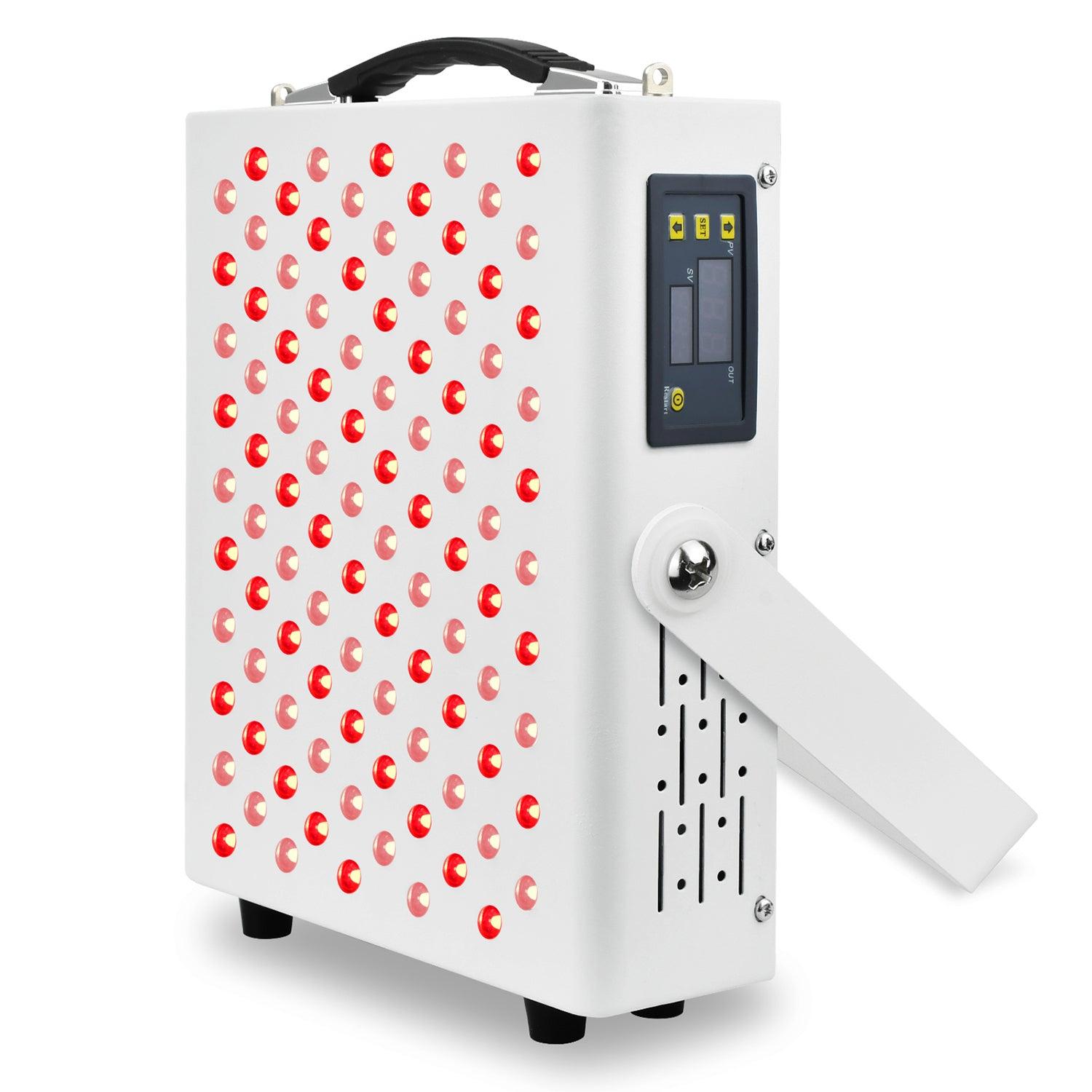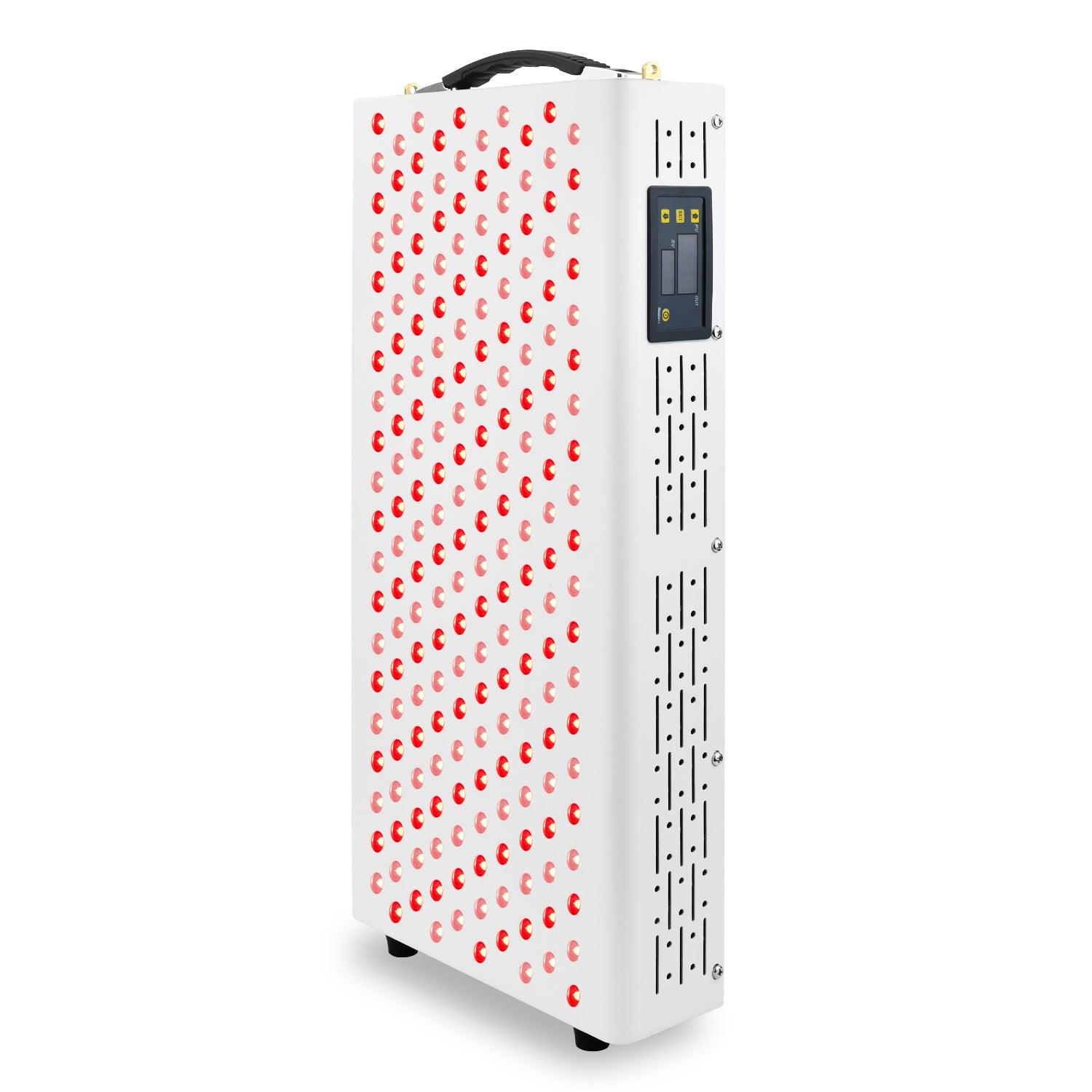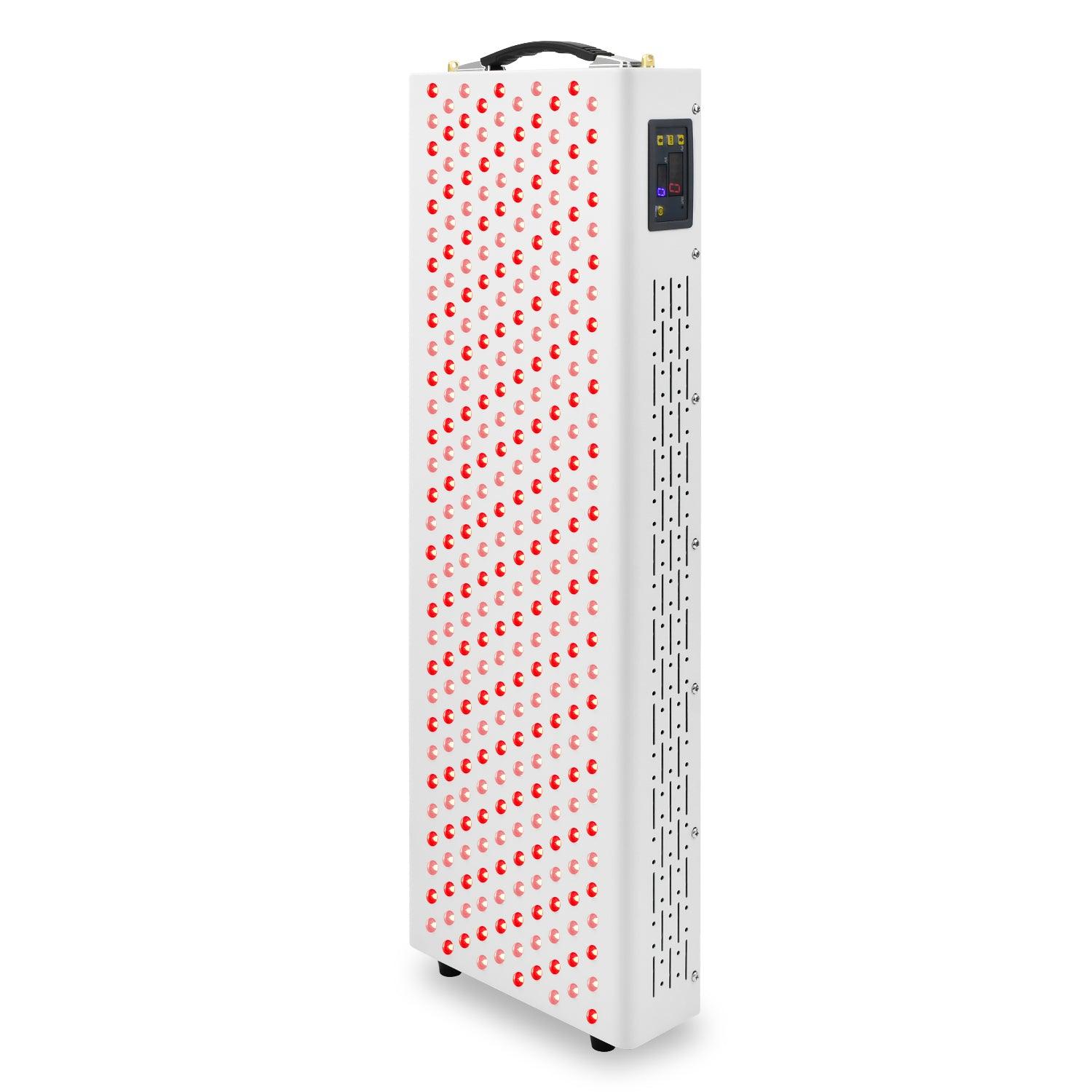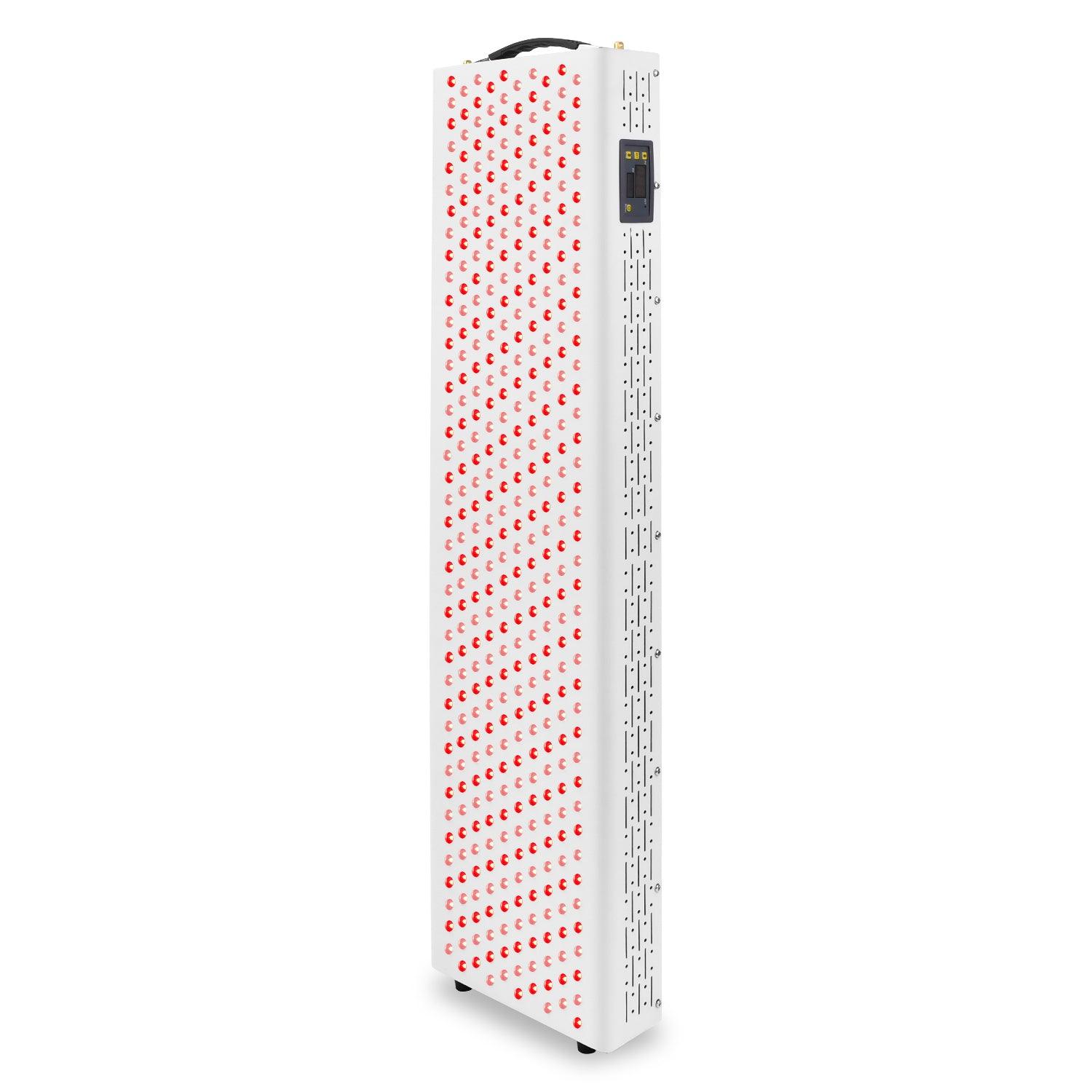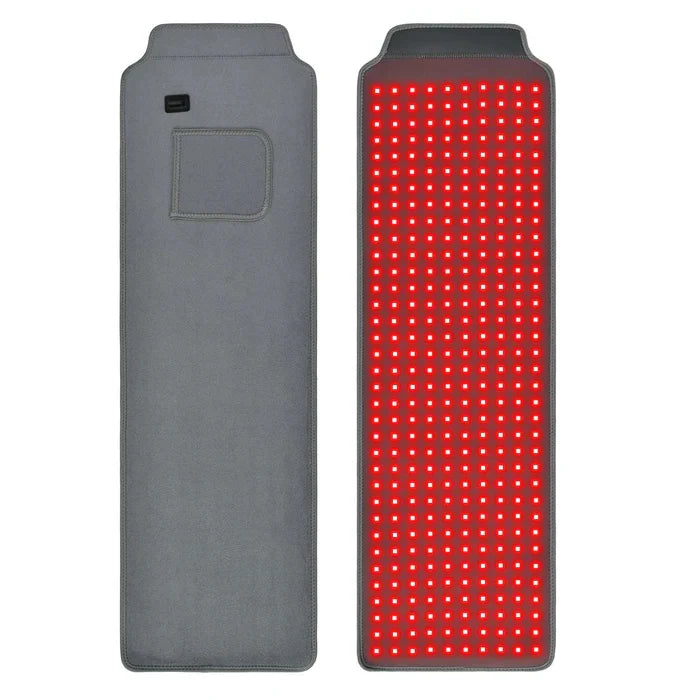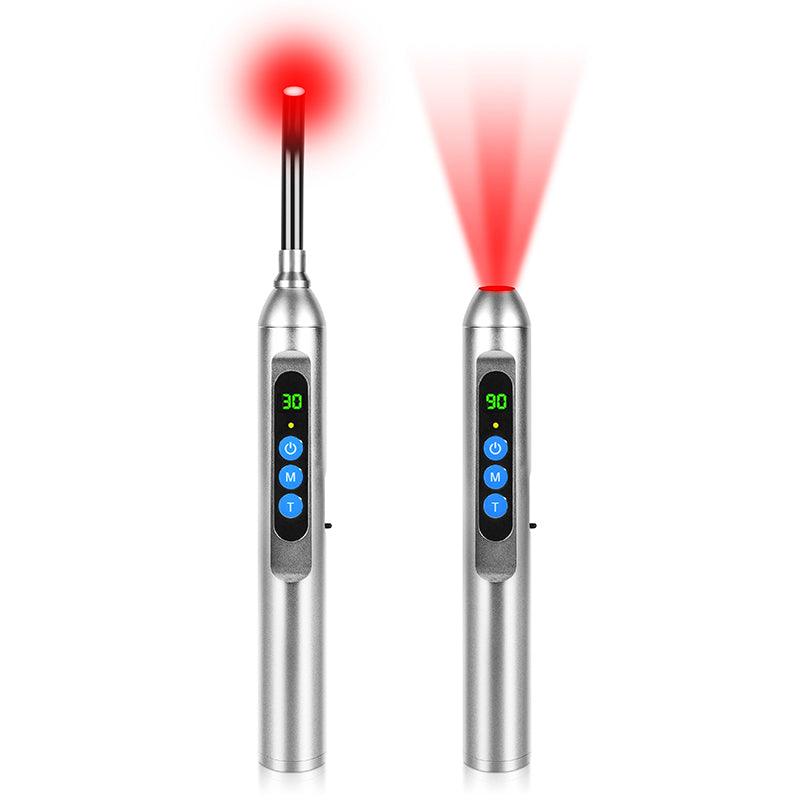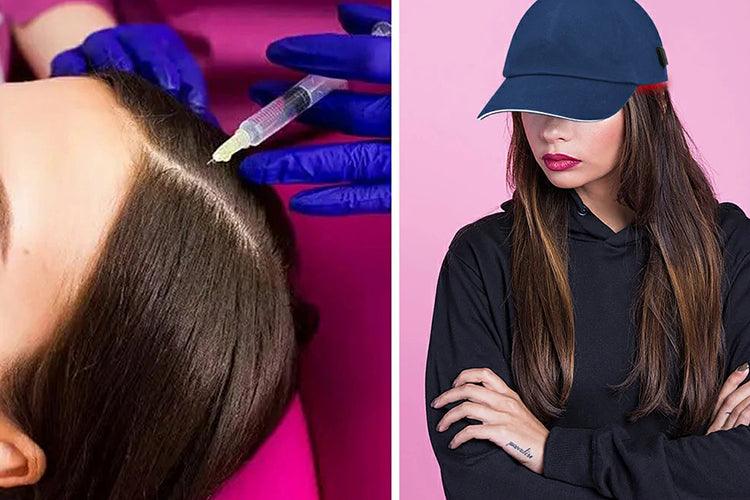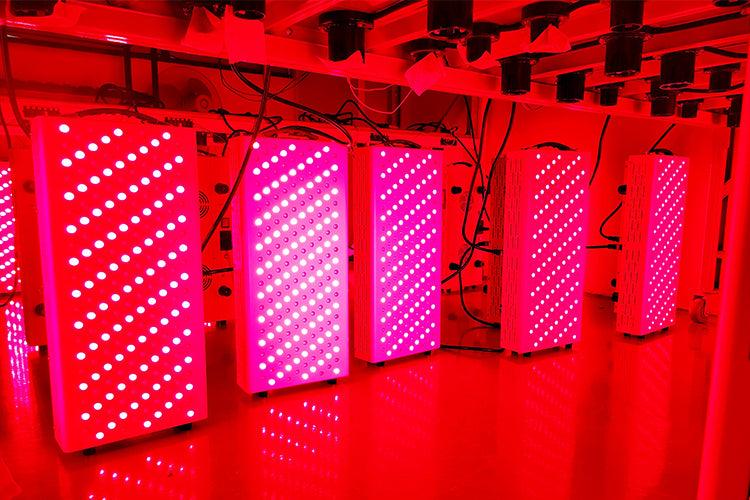RLT, is gaining fame in a field of wellness through its absorption of unique wavelengths of light, reporting potential health benefits. The benefits which can be observed are better skin health or muscle recovery as well as controlling pain or improving hair growth. Although RLT is effective when an exact wavelength is used, different wavelengths penetrate tissues to a particular depth where they are effective.
This article delves into the two most common wavelengths in RLT: 660nm and 850nm are notable because of their own defining qualities and using them as the basis for red light therapy portable device development, that are planned for future applications.
Learning about variations between the types of wavelengths enables you to make an intelligent decision regarding your choice of option. It is one of the essential steps to ask any health practitioner before executing any new therapy, including RLT.
Understanding Red Light Therapy
Red light therapy (RLT), also known as photo bio modulation (PBM), is a therapeutic technique that utilizes specific wavelengths of red and near-infrared light such as infrared hat to interact with cells and potentially promote various health benefits.
How RLT Works: Cellular Interactions and Photo bio modulation
At the core of RLT lies a process called photo bio modulation. When red or near-infrared light is absorbed by cells, particularly within the mitochondria (the cell's energy centers), it triggers a cascade of cellular responses. These responses can include:
- Increased ATP production:ATP is the primary energy currency within cells, and RLT can stimulate its production like outdoor ambient lighting, leading to enhanced cellular function and repair.
- Increased blood flow:RLT can promote the dilation of blood vessels, leading to improved blood flow and delivery of oxygen and nutrients to the targeted tissues.
- Reduced inflammation:RLT can influence the activity of inflammatory molecules and cells, potentially leading to reduced inflammation and pain.
- Stimulation of collagen production:Collagen is a protein essential for skin health and tissue integrity. RLT can stimulate the production of collagen, potentially improving skin texture and wound healing.
These cellular responses are believed to contribute to the various health benefits attributed to RLT.
Applications of RLT Devices
RLT devices come in various forms, each with its own application:
- Panels and Pads: Large red light panelor flexible pads emit red or near-infrared light and are often used for treating larger areas of the body, like the back or legs.
- Wraps and Sleeves:These targeted red light therapy belt devices conform to specific body parts like knees or elbows, providing localized treatment.
- Caps and Helmets:There is red light hat designed for the head or scalp, these devices are used for hair growth or targeting the face.
- Handheld Devices:Compact and portable, hand held red light therapy device offer targeted treatment for smaller areas like the face or wrists.
The specific device chosen will depend on the individual's needs and the targeted area for treatment.
Deep Dive into Wavelengths
To comprehending the groundwork of RLT involves encompassing the parade of light and its properties. Let’s explore how the spectrum of light can vary, as well as the difference between light in related wavelengths and how that influences the effectiveness of red light therapy before and after.
The Light Spectrum: A Spectrum of Colors
Light comes to be with a myriad of realms having a range of electromagnetic frequency. These waves are being waves which name the width of wavelength in nano meters (nm). Former wavelengths are as a function of the energy while the latter have lower energy. The visible light spectrum, just a small fragment of this spectrum that we sense and perceive as color occupies one fraction of it.
Visible vs. Near-Infrared Light in RLT
Within the context of RLT, two key regions of the light spectrum are utilized:
- Visible red light:These wavelengths approximately lie in the range of about 620-750nm to which human eye is visible.
- Near-infrared light:This region includes all the wavelengths of light that are longer in wavelength than visible light (more than 750nm) like red light therapy 940nm and extends even further. The near-infrared radiation which is invisible to the eye-bare can be sensed by skin as warmth when we close the eyelids.
Exploring the RLT Wavelength Landscape
While 660nm and 850nm are the two most commonly studied wavelengths in RLT, additional wavelengths also hold potential:
- 660nm:415nm wavelength is very alike to both other wavelengths, 660nm and, which are considered nonspecific. They are considered as having similar effects when it comes to regulating skin health or wound healing.
- 850nm:810 nm also alike to 850nm, near infrared rays are able to penetrate more downwards and may be perfect for those body pain deeper inside, like muscle recovery.
Although it is axiomatic that the best wavelength is decided by the mode of action and purpose of the application it is significantly paramount to keep in mind a wavelength that is in accordance with the depth of the target and the benefits of the operation. Recognizing these intricacies is a necessary step towards the selection of a proper treatment of RLT to see full body red light therapy before and after results.
660nm Red Light: Benefits and Applications
Being the solution of red visible light spectrum 660 nm, RLT is a stand out wavelength due to the high end efficiency and its benefits.
Characteristics of 660nm Light
Hence, this particular width of light is readily absorbed by the chromospheres, light-absorbing molecules; these are components of cells. This absorption triggers the cellular responses mentioned earlier, leading to potential benefits across various areas just like outdoor ambient lighting.
660nm RLT and Skin Health
Studies suggest that 660nm RLT holds promise in promoting skin health:
- Wound healing:It perhaps can boost tissue regeneration and cell growth leading to appropriate wound closure.
- Collagen production:Likewise, the 660rm wavelength of red light panel may lead to an increase in collagen production, which is related to enhanced skin elasticity and the reduction of wrinkles and fine lines.
- Anti-aging effects:It might stimulate the production of collagen, as well as decrease inflammation process, which in turn lead to a more attractive or youthful appearance.
660nm RLT and Muscle Recovery
Beyond skin health, 660nm RLT demonstrates potential benefits for muscle recovery:Beyond skin health, 660nm RLT demonstrates potential benefits for muscle recovery:
- Pain reduction:It might be able to relieve the muscular soreness and pain after a workout session. The light treatment for cold sores is lowering the inflammation and completely the tissue regeneration process.
- Reduced inflammation:The RLT frequency of 660nm may be involved in a cheaper supply of inflammatory molecules and cells, so in this case, we can accelerate the recovering from muscle strain or injury.
- Fatigue reduction:Different lights wavelengths in RLT claims to fix metabolism thus improving muscle performance and reducing fatigue. The handheld red light therapy device results into better athletic performance or overall health.
Other Potential Applications
While research is ongoing, 660nm RLT is also being explored for potential benefits in:While research is ongoing, 660nm RLT is also being explored for potential benefits in:
- Pain management: On those terms it can deal with chronic pain conditions such as arthritis with red light therapy belt.
- Mood enhancement:It appears that RLT has far-reaching impacts on brain activity and neurotransmitters, that may potentially boost moods and symptoms of depression abatement.
- Hair growth:The latest studies reveal the efficiency of 660 nm RLT on the restoration of hair growth for people with infrared hat. There are several red light therapy cap that trigger hair growth and more effective for hair loss treatment.
Limitations of 660nm RLT
While promising, it's important to acknowledge the limitations of relying solely on 660nm:While promising, it's important to acknowledge the limitations of relying solely on 660nm:
- Limited depth of penetration:Because 660nm light is the visible-spectrum it is limited in its penetration depth compared to near-infrared light. However, one disadvantage will be in the fact that it won't be able to go deep to the tissues like joints or muscles, so its effectiveness will be lower.
- Not a cure-all:Its application, RLT, should not turn into an alienated substitute in some cases for any therapy recommended and be use in combination with others instead.
It is vital for choosing effective light therapy approaches to understand not only its advantages but also its limits.
850nm Near-Infrared Light: Benefits and Applications
Above the visible spectrum, at 850 nm, resides in the light near-infrared part of its spectrum that offers the unique features with its space peculiarities.
Characteristics of 850nm Light
This wavelength, which provides a deeper penetration depth compared with visible light wavelengths such as 660nm, is beneficial in dealing with deep-seated issues. The ability of red light therapy device brings it the total healing deeper tissues which may affect tissues besides the skin’s surface.
850nm RLT and Muscle Recovery
The effect of red light therapy (RLT) on human beings has been under the spotlight of many medical research endeavors throughout the years. What strengthens this notion is the discovery of the effects 850nm light on recovery time for lean muscle mass.
Due to its deeper penetration, 850nm RLT holds significant promise full body red light therapy before and after in muscle recovery:
- Deeper tissue penetration:Additionally, the infrared beams at a 850nm length allows direct access to the deeper muscle layers, leading to faster muscle tissue repair and decreasing pain.
- Improved blood flow:RLT at this wavelength increases the chances of better blood flow to the specific area, expediting the delivery of critical nutrients and oxygen, which are the source of all the cells that facilitate healing.
- Reduced inflammation: Just like any other RLT wavelength, 850nm, too, influences inflammation which brings down muscle soreness and aid in the quick recovery.
850nm RLT and Joint Pain Relief
Beyond muscles, 850 nm red light therapy deeper penetration offers potential benefits for joint health
- Targeting deeper tissues:This is achieved through the distinctive ability of 850 nm RLT to pierce deeper into the surface, which enables treatment of structures more remote like those found in bone and cartilage, which this way potentially provides relief from diseases such as arthritis as well.
- Reduced inflammation:As with muscles, 850nm may allow reduction of inflammation within and even around the joints, and thanks to it pain and stiffness can be such issues alleviated.
Other Potential Applications
Let’s explore the potential benefits of 850nm RLT in various areas:
- Sports performance enhancement: The 850nm RLT leads to not only improved muscle recovery, but also enhanced performance can account for better sports results among athletes.
- Wound healing:Such red light sourced from 850nm is just as useful as 660nm RLT in terms of tissue regrowth and cell proliferation for wound-healing.
- Nerve pain management:While some research shows 850nm RLT targeting chronic neuropathic pain effectively indeed, other studies indicate that there are better treatments.
Limitations of 850nm RLT
While offering deeper penetration, 850nm RLT also comes with limitations:
- Over penetration for skin concerns:If a skin problem outlined the issue, 850nm wavelength might be too deep to reach the be crowds, which could make the treatment less laser-focused.
- Lack of research on specific applications:Research covering 850nm might get limited in some applications while the short-wavelength is advantageous, giving extensive room for more investigation.
I would remind though that while these potential benefits might be great but the limitations must also be considered side by side before embracing this 850nm RLT for specific applications.
One of the topics we are going to cover is comparative discussion on 660nm and 850nm wavelength.
Comparing 660nm and 850nm Wavelengths
Comparing the main features of 660nm RLT and 850nm RLT is the key factor for making the choice, which wavelength effect is better in your case. Here's a side-by-side comparison:
|
Feature |
660nm Red Light |
850nm Near-Infrared Light |
|
Light Type |
Visible Red |
Near-Infrared |
|
Penetration Depth |
Shallower |
Deeper |
|
Benefits (Primary) |
Skin health, wound healing, collagen production, pain reduction (superficial) |
Muscle recovery, joint pain relief, deeper tissue targeting |
|
Limitations |
Limited depth penetration for deeper tissues, may not be ideal for all skin concerns |
Potential overpenetration for skin issues, less research on specific applications compared to 660nm |
Practical Considerations for Red Light Therapy
Selecting the RLT apparatus along with implementing it in a safe and appropriate manner is a careful process to go through. Here's a breakdown of key factors:
Choosing a Device:
- Wavelength:As we have talked about before, the best wavelength of red light panel to use would be the one that aligns with your aspirations.
- Power density: It is defined in mill watt per square centimeter (mW/cm²), which is a more intense form of light. The higher power densities are better to reach quicker outcomes but ensure they are properly tenable, regarding the specific area you will be using it.
- Treatment area:Think about the dimensions and the form of the desired area as it could be different for examples: head or skin. Pick a device with the safeguard based on the area to be covered.
- Device type:Whether you are looking for panels, pads, wraps, or handheld red light therapy device, we will assist you in getting the item that is best-suited for you. Determine the duration of time that works best for you, and the treatment area in which you feel most relaxed.
- Reputable brand:Instead of going for appliances from brands that are not produced according to the safety rules, pick only safe brands that have fda approved red light therapy
Consistency and Duration:
- Consistency:Generally newer data claims a near packaging of treatment on a daily regular basis to attain positive effects. Adhere to a stable regimen to follow the chosen period of time.
- Duration:The treatment duration times are different in every red light therapy device and depending on its wavelength and affected condition. And, be sure to read the manufacturer's guide and double-check with a healthcare provider if necessary.
Safety Tips and Precautions:
Do you know how to use red light therapy at home? Now that you're equipped with insights into the 660nm and 850nm wavelengths, let's explore essential safety tips and precautions.
- Eye safety:Look at the RLT device only with special glasses since the mirror will make the beams of light to converge and they can be harmful for your eyes if they reflect into your eyes. Put on suitable spectacles consisting of lenses with the desired wavelength.
- Skin sensitivity:Verify the safety of the device by carrying out a patch test on a small part of your skin before it is worn on a bigger part of your skin. That is how it might be able to estimate any possible sensitivities. Create your own: This is how it might be able to say a word to any possible sensitivities.
- Pre-existing conditions:People who have a medical conditions other than the abstract epilepsy, photosensitivity, or other skin diseases, it may be better for them to be prudent or to avoid RLT.
- Follow instructions:Leave the manufacturer instructions when it comes to treatment duration, the recommended course of action and what precautions to take.
- Seek professional advice:If there is any concern talk to your healthcare provider to panel whether RLT is fits with your case and be sure to use it safely and appropriately.
Through the applying therapy must check full body red light therapy before and after measures. You will be able to leverage the best outcomes from light red therapy.
Final Words
Red light therapy is research validated as an effective treatment for multiple ailments in humans, including the health of the skin and the body. While learning the dissimilarity between wavelengths like 660nm and 850nm is crucial for dissenting, it is still important for the decision-making process.
Look at your specific purpose and make an appointment with a healthcare professional to have a mouth guard prescribed for you that is personalized, free of hazards, and effective. Do not forget that the wavelength which performs well is the one that can give you access to the many benefits of this popular red light therapy device and help you practice it effectively.


